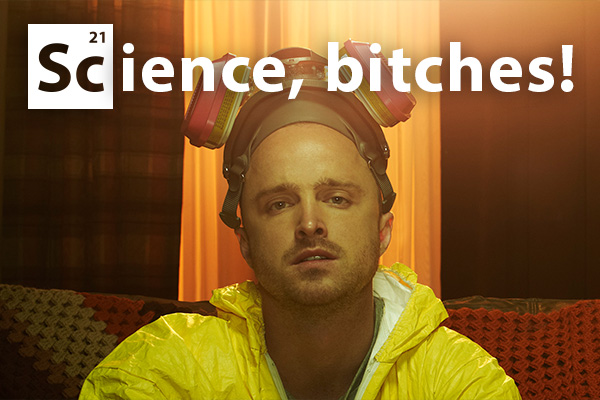Science, Bitches | Issue 11
Out of acid? Just close your eyes.
The thing is, my grandma is going blind. And somewhat ironically, as her eyes faded, she started seeing things. So what’s going on?
There’s a pretty big chunk of your brain dedicated to sight. From the moment you were born, it’s been processing information from the outside world, and turning it into pictures. If you start to lose your eyesight after decades of training up those neurons, they’re going to be a little confused. Stop providing them with external stimulus, and they’ll just start making shit up; in other words, going blind can give you hallucinations.
This should come as no surprise, really; our brain makes stuff up all the time. Take a look around you. Your eyes are pretty good, or maybe they need a little help with glasses, but they at least provide you with a complete image of the room, right? Well, not quite. The human eye is a bit weird. The light sensitive part of your eye that allows us to see, the retina, has a dirty big hole in it; your blindspot. But it’s not like we notice a hole in our vision, and that’s because your brain makes an educated guess about what’s there based on the surrounding image, and fills in the gap. Don’t believe me? It’s easy to see for yourself, there are plenty of blind spot tests on the Internet! Try one out. It’s bizarre.
So our eyes are a bit shit, but our brain makes up for it. And it works pretty well, most of the time. If there’s only a small hole in our vision, it’s easy to guess what should be there. If you’re missing a piece or two of a jigsaw puzzle, it’s still obvious what the picture is meant to be. But what if the hole gets bigger? What if there’s more than one? Your brain works frantically to fill in the gaps, but with fewer clues about what is actually there. So sometimes it just puts random pictures in. And that’s how an entirely sane and sober person can see spaniels covering the walls, while drinking tea with her granddaughter on a Sunday afternoon!
But your imagination doesn’t stop there; deaf people often report “hearing” music. It’s the same thing: your brain isn’t getting messages from your ears, so it just tries to guess what’s there. Inevitably it will be wrong, so once again sensory deprivation leads to hallucinations.
Sound like a fun time? You can get a similar experience with the Ganzfield effect. All you need is a ping-pong ball, over-ear headphones, and a radio. Sit or lie down in a quiet and evenly lit room, tape half ping-pong balls over your eyes, and play white noise (static) through your headphones. You’ll look hilarious, but if you’re patient you should start to have some complex visual and aural hallucinations! In the ‘70s, some thought this might be evidence of ESP or telepathy, but now we know it’s just your bored brain getting creative. That’s science, bitches!



